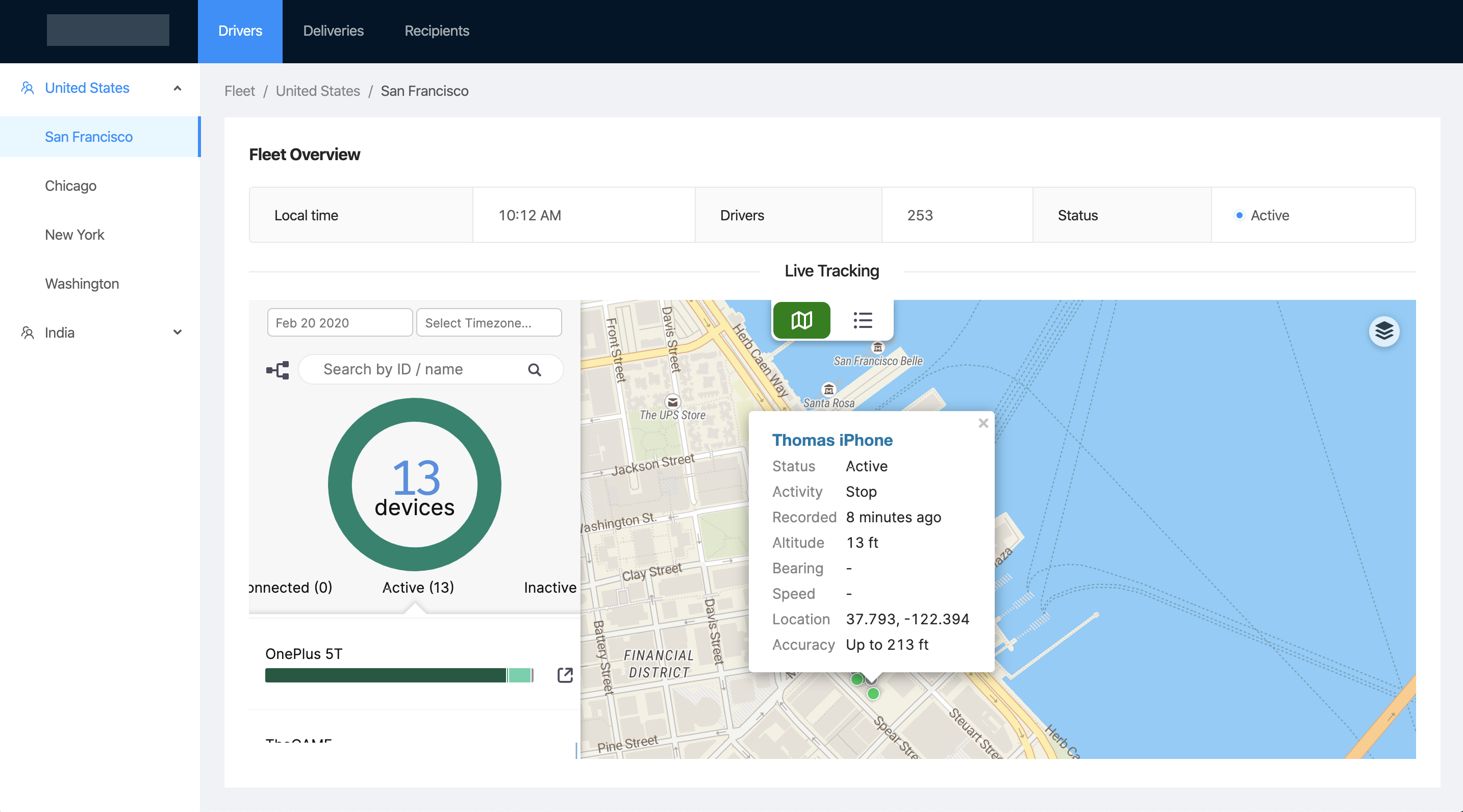Opportunity
The success of gig work business models, pioneered by companies like Uber, has sparked widespread adoption across industries, particularly in the $11 trillion logistics market. However, many companies require seamless location tracking solutions to facilitate on-demand services. HyperTrack recognized this need and positioned itself as a provider of essential building blocks - APIs, SDKs, and dashboards - to streamline the integration process, enabling developers to swiftly bring last-mile logistics solutions to market.
My Role
As the Head of Developer Experience, I was accountable for the quality and adoption of our products. For this project, I was directly responsible for user and market research, roadmap planning, developer onboarding, go-to-market efforts, and customer integration success.
Hard Things
Despite initial traction, HyperTrack encountered challenges in solidifying product-market fit and establishing a repeatable growth playbook:
-
Switching Costs: Overcoming the inertia associated with transitioning from internal tracking solutions, which posed significant organizational and engineering challenges for potential customers.
-
Prioritizing Features: Navigating the intricate landscape of feature requests required a shift from internal assumptions to a customer-centric approach, to ensure alignment with the diverse needs of the logistics market.
-
Building Developer Trust: Establishing credibility and trust within the developer community, pivotal decision-makers in selecting tracking solutions, emerged as a formidable obstacle.
Approach
To address the formidable hurdle of switching from existing internal tracking solutions, I implemented a series of strategic initiatives aimed at minimizing organizational and engineering effort for potential customers. By offering 10-minute working samples of our platform and end-to-end integration examples, developers could quickly assess its compatibility with their requirements, thus lowering the barrier to adoption. Moreover, I streamlined documentation and incorporated robust API error handling mechanisms, ensuring that developers encountering obstacles during the integration process could swiftly troubleshoot and proceed with minimal disruption. This approach not only expedited the transition to HyperTrack but also instilled confidence in the reliability and accessibility of our solutions.
Central to our strategy was the meticulous prioritization of feature requests, a task complicated by the diverse needs of potential customers in the sprawling logistics market. To effectively address this challenge, I recalibrated our approach, shifting from internal assumptions to a customer-centric development paradigm. Through initiatives such as the BFF20 project, we engaged closely with a select group of 20 design partners, representing a diverse cross-section of industries, fleet sizes, and operational complexities. This collaborative effort allowed us to gain invaluable insights into the specific pain points and requirements of our target market segments, enabling us to tailor our roadmap to address their most pressing needs effectively.
Establishing and nurturing trust within the developer community was imperative to the success of our endeavors. To this end, we undertook a concerted effort to engender confidence in HyperTrack’s capabilities and reliability. By leveraging mature cloud providers, such as AWS Serverless, for our infrastructure needs, we ensured the robustness and scalability of our platform, instilling assurance in potential customers. Additionally, our commitment to open-source collaboration played a pivotal role in fostering trust, as we openly shared components of our platform for scrutiny, contribution, and utilization by the wider developer community. Direct engagement initiatives, including participation in HackerNews and API Days, facilitated meaningful interactions with developers, allowing us to address concerns, gather feedback, and cultivate a supportive ecosystem around HyperTrack’s offerings.
Impact
These strategic decisions and initiatives yielded tangible results:
-
Enhanced Product Roadmap: Refined segmentation and prioritization strategies led to improved messaging, accelerated customer acquisition, and successful fundraising efforts.
-
Reduced Integration Time: Implementation of self-serve dashboards, improved documentation, and robust API error handling contributed to a notable reduction in integration time, enhancing overall developer experience and accelerating time-to-market for customers.
-
Fostered Developer Trust: Positive feedback and active engagement from the developer community underscored HyperTrack’s commitment to transparency, collaboration, and delivering value.
Key Highlights
-
Customer Segmentation Mastery: Refined customer segmentation strategies led to a better understanding of key value propositions, driving targeted product development and messaging to address specific use cases effectively.
-
Open Source Collaboration: Embracing open-source principles facilitated community engagement and collaborative software development, evident in over 2000 stars on GitHub repositories.
-
Developer Experience Optimization: Initiatives to streamline integration processes and enhance documentation significantly improved developer experience, accelerating time-to-market for customers.
